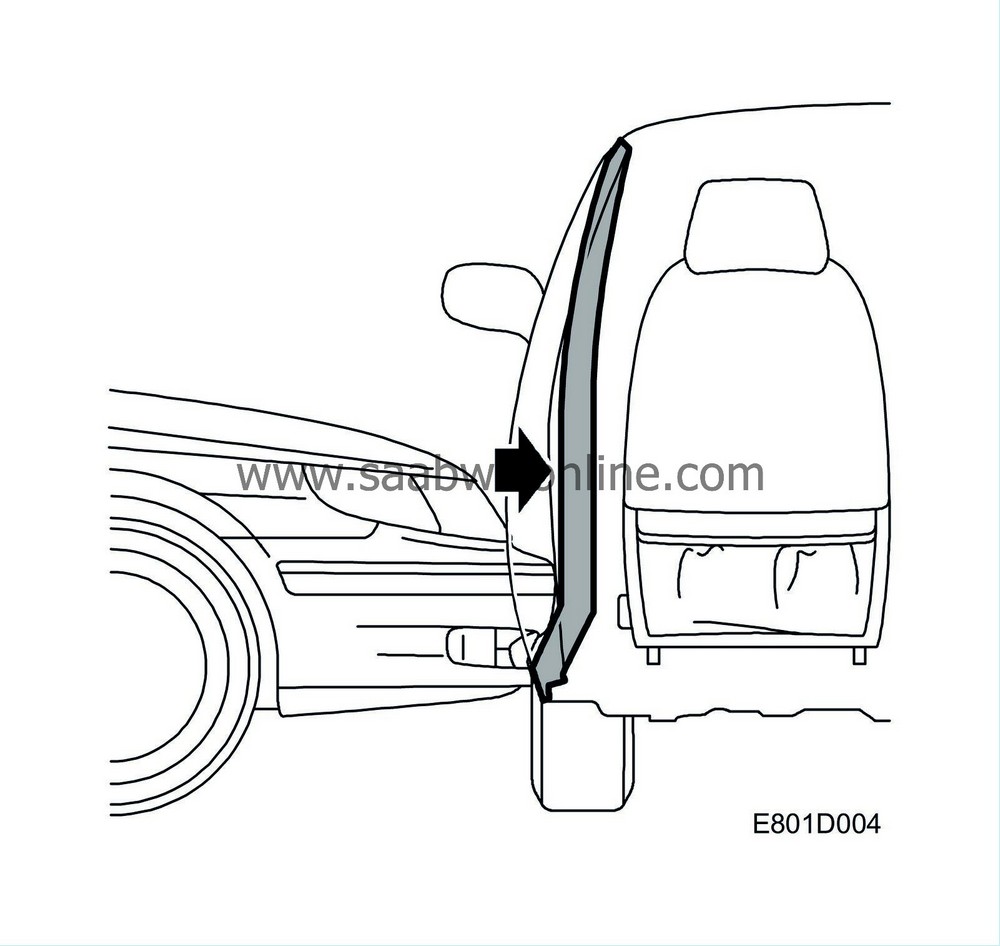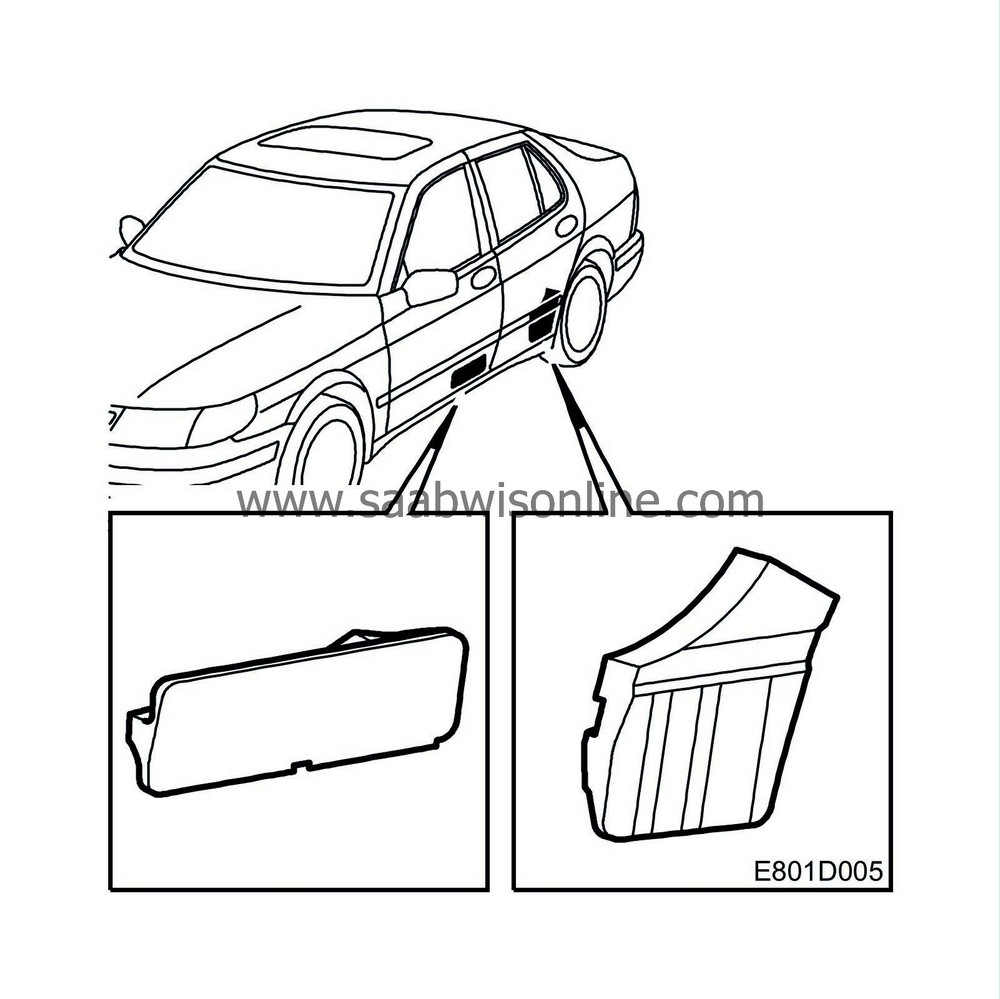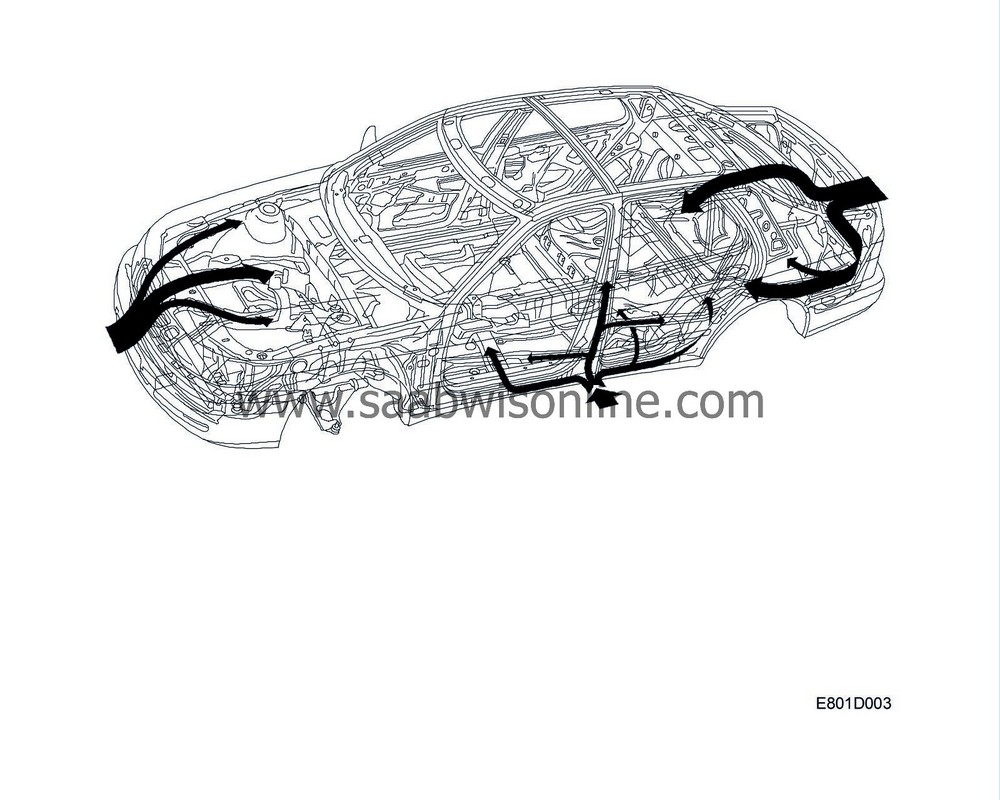PRE-RELEASE
Impact safety
| Impact safety |
Forces are absorbed by the body's deformation zones and the beam system of the cabin enclosure in different types of collision.
The body of the Saab 9-5 is constructed to create a survival area for the driver and passengers in case of a collision. Basically, the forces created in a collision are slowed down by the deformation zones and propagated by the cabin enclosure beam system so that the stresses are as evenly distributed as possible.
The large deformation zones in the front are designed to create a stable and robust deformation behaviour through their broad structure with double sections and short overhang. The central beam with its double section distributes the forces over a larger area, where the partition in the beam constitutes the stability. The front structure has three load paths that are distributed so that 50% of the total impact force passes through the central beam and 25% through the upper and lower load paths.

The most important component in case of a side impact is the B-pillar, which is designed to utilise the pendulum effect. Therefore, the B-pillar is extremely stiff in the middle and slightly softer in the upper and lower sections. This results in the B-pillar acting as a pendulum and directing the forces via the sills and into the car. The front doors have angled door members to direct the forces to the B-pillar and to increase the pendulum effect. Due to the robust design of the B-pillar, a larger proportion of the impact is directed to the hip area of the body instead of the much softer body areas at chest level.
It is extremely important that the properties of the energy absorbing deformation zones and the stable cabin enclosure are not impaired or changed when the body has been repaired. The cabin enclosure must never be made weaker after repair. On the other hand, the deformation zones must not be made stronger than they were before the damage occurred either. A stronger front or rear end will propagate the forces instead of damping them, which will increase the strain on the occupants.
| Important | ||
|
In order for Saab AB to be able to accept responsibility and guarantee a maintained high crash safety after repair, it is essential that the work be carried out correctly using the right materials. |
||
| Side impact protection in doors |

There are foam spacer blocks in the doors that are used to stiffen them and prevent the door from entering into the cabin in case of a side collision.
| Important | ||
|
Always refit the spacer blocks in the doors if they have been removed. This is extremely important in order to maintain safety requirements in case of a side collision. |
||



